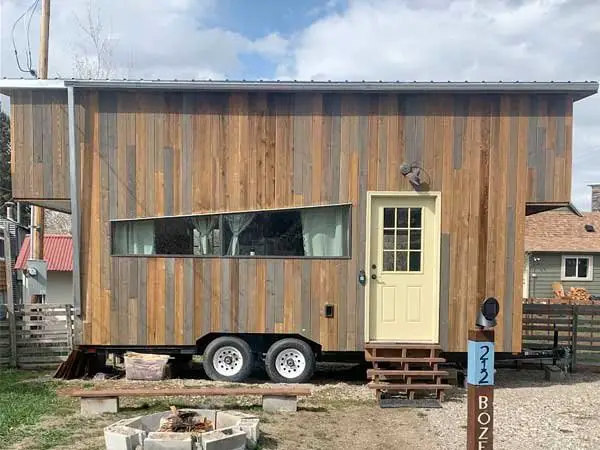Montana, the Treasure State known for its stunning landscapes and vast wilderness, has become an attractive destination for those seeking a simpler and more sustainable way of living. With the rise in popularity of tiny homes, many people are wondering if these petite dwellings are legal in the state. Whether you’re dreaming of downsizing or seeking an environmentally-friendly lifestyle, join us as we explore the legal status of tiny homes in Montana and discover the possibilities that await you in this majestic state.
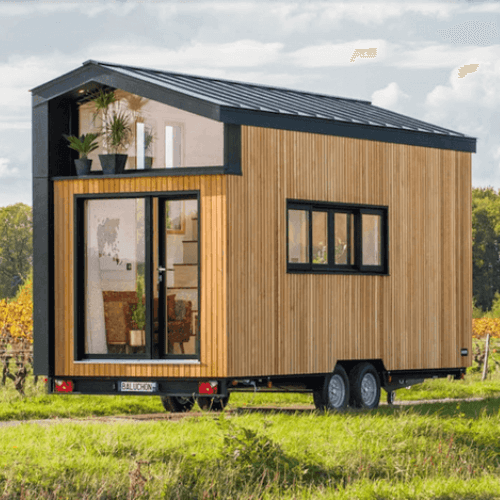
Laws and Regulations Regarding Tiny Homes in Montana
Definition of a Tiny Home in Montana
In Montana, a tiny home is typically defined as a residential structure that is no larger than a certain square footage and is designed for permanent habitation. While there is no specific statewide definition for a tiny home, it is generally understood to be a dwelling that is compact, energy-efficient, and designed for minimalist living.
Building Codes and Zoning Laws
Building codes and zoning laws play a crucial role in determining the legality of tiny homes in Montana. These regulations are put in place to ensure the safety and well-being of residents, as well as to maintain the integrity of communities. It is important for prospective tiny home owners to familiarize themselves with the specific requirements and restrictions in their desired location, as building codes and zoning laws can vary widely from one jurisdiction to another.
Permitting Process for Tiny Homes
In order to comply with building codes and zoning laws, individuals planning to build or install a tiny home in Montana must obtain the necessary permits. The permitting process typically involves submitting detailed plans and specifications to the local building department, along with payment of any required fees. It is important to work closely with local officials during this process to ensure compliance with regulations and to avoid delays or penalties.
Minimum Size Requirements
While there are no statewide minimum size requirements for tiny homes in Montana, local jurisdictions may have their own specific guidelines. It is important to check with the local building department to determine any applicable restrictions. Additionally, some communities may have minimum square footage requirements for permanent dwellings, which could impact the feasibility of tiny home living in certain areas.
Location Restrictions for Tiny Homes
Location restrictions can vary from one jurisdiction to another in Montana. Some communities may allow tiny homes on residential properties, while others may require them to be located in designated areas or within certain zoning classifications. It is important to research and understand the specific regulations in the intended location to ensure compliance.
Utilities and Off-Grid Living
Tiny homes often utilize alternative or off-grid systems for water, electricity, and sewage. While the use of these systems can provide independence and sustainability, it is important to understand and comply with any regulations pertaining to alternative utilities. Additionally, off-grid living may require additional planning and preparation, such as ensuring access to suitable water sources and managing waste disposal responsibly.
Homeowner Association Restrictions
For individuals considering living in a tiny home within a homeowner association (HOA), it is crucial to review the HOA’s rules and regulations. Some HOAs may have restrictions that prohibit or limit the placement of tiny homes within their communities. It is important to clarify any potential limitations before making a commitment to avoiding potential conflicts or legal issues.
State and Local Taxes
Tiny home owners in Montana may be subject to various state and local taxes, including property taxes. The specific tax implications will depend on factors such as the value of the property and the jurisdiction in which the tiny home is located. It is recommended to consult with a tax professional to understand and plan for any tax obligations associated with tiny home ownership in Montana.
Ownership and Titling of Tiny Homes
Tiny home owners in Montana must comply with the state’s requirements for ownership and titling of dwellings. Depending on the specific circumstances, a tiny home may be considered personal property or real property. It is important to consult with legal professionals to determine the most appropriate method of titling and registering a tiny home in Montana.
Insurance and Financing for Tiny Homes
Finding insurance coverage and securing financing for tiny homes in Montana can be challenging due to their unique nature and the lack of standardization in the industry. Insurance companies may have specific requirements or restrictions for covering tiny homes. Similarly, obtaining financing for the purchase or construction of a tiny home can be more difficult compared to traditional homes. It is important to explore all available options and work with professionals experienced in insuring and financing tiny homes to ensure a smooth process.
Advantages of Living in a Tiny Home in Montana
Affordability
One of the main advantages of living in a tiny home in Montana is affordability. The reduced size and lower construction costs of tiny homes make them a more affordable housing option compared to traditional homes. Additionally, tiny homes typically have lower utility and maintenance costs, allowing homeowners to save money on monthly expenses.
Sustainable Living
Tiny homes promote sustainable living in various ways. The smaller footprint of these homes results in reduced energy consumption, lower water usage, and decreased waste production. Additionally, many tiny home owners choose to incorporate environmentally friendly features and materials, such as solar panels and reclaimed materials, further reducing their impact on the environment.
Mobility and Flexibility
Tiny homes offer a unique level of mobility and flexibility. Unlike traditional homes, tiny homes can be easily transported and relocated to different areas, allowing homeowners to change their living environment as desired. Whether it’s moving to a new neighborhood or exploring different regions of Montana, tiny home owners have the freedom to adapt their living arrangements to suit their needs and desires.
Minimalism and Decluttering
Living in a tiny home encourages a minimalist lifestyle and promotes decluttering. With limited space available, homeowners are forced to prioritize their belongings and only keep what is essential. This can lead to a simpler and more organized living environment, free from the burden of excess possessions.
Connection to Nature
Montana is renowned for its stunning natural landscapes, and living in a tiny home allows residents to fully immerse themselves in the beauty of the state. Whether it’s parking a tiny home near a scenic lake or nestled in a forested area, tiny home living offers the opportunity to appreciate and connect with nature on a daily basis.
Independent Lifestyle
Tiny homes provide an opportunity for individuals to embrace an independent lifestyle. With a smaller living space and fewer possessions, homeowners can focus on their passions and personal growth instead of being tied down by the demands of a larger home. This independence can lead to a greater sense of freedom and fulfillment.
Increased Energy Efficiency
The smaller size of tiny homes inherently results in increased energy efficiency. With less square footage to heat and cool, homeowners can enjoy reduced energy consumption and lower utility bills. Additionally, the use of energy-efficient appliances and features can further enhance the energy efficiency of tiny homes, making them an environmentally friendly choice.
Lower Maintenance and Operating Costs
Tiny homes require less maintenance and have lower operating costs compared to traditional homes. With fewer systems and components to maintain, homeowners can save time and money on repairs and upkeep. Additionally, reduced square footage means fewer cleaning tasks and less time spent on household chores.
Sense of Community
Living in a tiny home can foster a strong sense of community. Many tiny home owners choose to reside in tiny home communities, where like-minded individuals come together to support and connect with each other. The close proximity and shared resources in these communities often lead to strong bonds and a sense of belonging.
Reduced Environmental Footprint
By their very nature, tiny homes have a significantly reduced environmental footprint compared to larger homes. The smaller size and simplified systems result in reduced energy consumption, water usage, and waste production. Choosing to live in a tiny home in Montana can be seen as a conscious decision to minimize one’s impact on the environment and contribute to a more sustainable future.
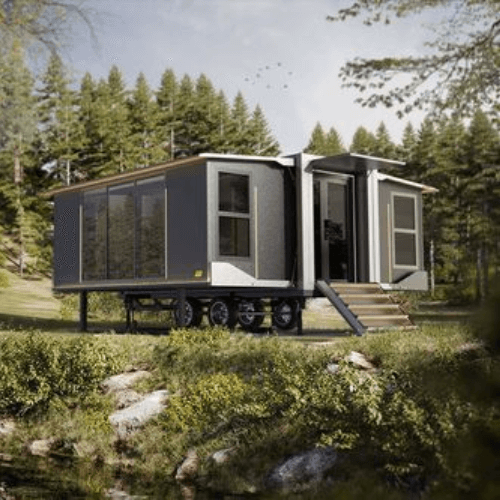
Disadvantages and Challenges of Tiny Home Living in Montana
Limited Space and Storage
Living in a tiny home means accepting the reality of limited space and storage. The compact size of these homes may require homeowners to downsize their belongings and make decisions about what to keep and what to let go. Adequate storage solutions and creative organizing techniques are essential to maximizing the use of available space.
Lack of Privacy
The intimate living space of a tiny home may present challenges when it comes to privacy. With open floor plans and limited private areas, finding personal space within a tiny home can be difficult. Sharing such close quarters with others requires open communication, respect, and a willingness to find creative solutions for privacy needs.
Difficulty in Finding Suitable Land
Finding suitable land for a tiny home in Montana can be challenging. Zoning restrictions, limited availability, and competition for desirable locations can make it difficult to secure a plot of land for a tiny home. This may require a significant amount of research, patience, and flexibility when searching for a suitable location.
Zoning and Building Code Restrictions
Zoning and building code restrictions can pose significant challenges for individuals looking to live in a tiny home in Montana. Different jurisdictions have varying regulations, and navigating these rules can be complex and time-consuming. It is important to research and understand the specific requirements in a desired location to avoid potential legal issues or roadblocks in the building process.
Harsh Weather Conditions
Montana’s climate can be harsh and unforgiving, posing challenges for tiny home dwellers. Extreme temperatures, heavy snowfall, and strong winds can impact the comfort and livability of a tiny home. Proper insulation, durable construction, and efficient heating and cooling systems are necessary to ensure the home is able to withstand the weather conditions and provide a comfortable living environment.
Challenges in Resale or Renting
Reselling or renting out a tiny home in Montana may present unique challenges. The niche market for tiny homes and the limited number of potential buyers or renters can make it more difficult to sell or lease the property compared to traditional homes. It is important to carefully consider the potential resale or rental value of a tiny home before making a purchase.
Limited Financing Options
Securing financing for a tiny home in Montana can be more challenging compared to traditional homes. Banks and lenders may have stricter requirements or limited options for financing tiny homes due to their unique nature and the lack of standardization in the industry. Exploring alternative financing options, such as personal loans or crowdfunding, may be necessary for some individuals.
Limited Lending and Insurance Options
Similarly, insurance coverage for tiny homes in Montana may be limited or more expensive compared to traditional homes. Insurance companies may have specific requirements or restrictions for covering tiny homes due to their mobility, size, or alternative utilities. It is important to work with insurance providers experienced in insuring tiny homes to ensure appropriate coverage.
Lack of Standardization
The lack of standardization in the tiny home industry can present challenges for both homeowners and builders. Without consistent guidelines and regulations, variations in construction quality and design can occur. This highlights the importance of conducting thorough research, working with reputable builders, and ensuring compliance with applicable building codes and regulations.
Social Stigma and Perception
Despite the growing popularity of tiny homes, there can still be social stigma and negative perceptions associated with this alternative housing option. Some individuals may view tiny homes as unconventional or inferior compared to traditional homes. It is important for tiny home dwellers to be prepared for potential judgment and to actively educate others about the benefits and advantages of tiny home living.
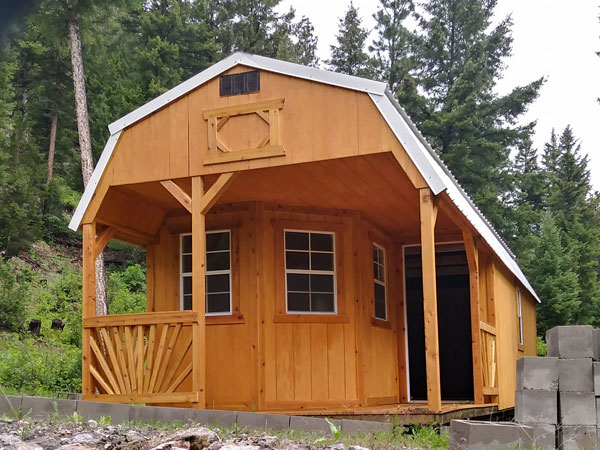
Alternatives and Solutions for Tiny Home Living in Montana
Establishing Tiny Home Communities
One solution to the challenges of tiny home living in Montana is the establishment of tiny home communities. These intentional communities provide a supportive environment for like-minded individuals and offer shared resources and amenities. By pooling resources and collaborating on land purchases, tiny home communities can overcome zoning and building code restrictions while creating a strong sense of camaraderie.
Collaboration with Local Authorities
Collaboration with local authorities is crucial to address the challenges faced by tiny home dwellers in Montana. By working together, homeowners, builders, and policymakers can identify and implement solutions that promote safe, sustainable, and affordable tiny home living. Engaging in open dialogue and building relationships with local officials can lead to more favorable regulations and increased support for the tiny home movement.
Utilizing Existing Zoning and Building Regulations
Where feasible, utilizing existing zoning and building regulations can simplify the process of establishing a tiny home in Montana. Working within the framework of current regulations, homeowners can explore options such as accessory dwelling units (ADUs), which may have more lenient requirements for size and placement. Adhering to existing regulations can streamline the permitting process and reduce potential conflicts with local authorities.
Forming Advocacy Groups
Forming advocacy groups dedicated to promoting and protecting the rights of tiny home dwellers is another effective strategy. These groups can raise awareness about the benefits of tiny home living, advocate for favorable policy changes, and provide support and resources for individuals navigating the challenges of tiny home ownership. By uniting together, tiny home enthusiasts can amplify their voices and effect positive change.
Educating and Raising Awareness
Education and raising awareness about tiny homes are essential to overcoming misconceptions and social stigma. By sharing information about the advantages and benefits of tiny home living, individuals can help change public perception and foster a better understanding of this alternative housing option. Hosting workshops, participating in community events, and engaging in public speaking opportunities are effective ways to educate and raise awareness.
Developing Innovative Tiny Home Designs
Continued innovation in tiny home design can address some of the challenges faced by dwellers in Montana. This includes advancements in energy-efficient systems, durable materials suitable for harsh weather conditions, and creative storage solutions. By pushing the boundaries of design and functionality, builders and architects can enhance the livability and desirability of tiny homes.
Exploring Off-Grid and Sustainable Solutions
Montana’s vast wilderness and abundant natural resources make it an ideal location for off-grid and sustainable tiny home living. Exploring alternative energy sources, such as solar and wind power, and implementing rainwater harvesting and composting systems can increase self-sufficiency and reduce the reliance on traditional utilities. Embracing sustainable practices can align with Montana’s commitment to preserving its natural beauty and resources.
Supporting Tiny Home Builders and Service Providers
Supporting local builders and service providers specializing in tiny homes is crucial to the growth and success of the tiny home movement in Montana. By investing in local resources, homeowners can benefit from the expertise and experience of professionals who understand the unique challenges and requirements of tiny home construction. Additionally, supporting local businesses helps foster economic growth and sustainability within the community.
Creating Financing and Insurance Options
Increased availability of financing and insurance options specific to tiny homes is needed to support the aspirations of homeowners in Montana. Working with financial institutions and insurance companies to develop specialized products and services can help bridge the gap and make tiny home ownership more accessible. Advocacy efforts and industry collaboration can drive the development of tailored financing and insurance solutions.
Promoting Research and Sharing Best Practices
Promoting research and sharing best practices within the tiny home community can contribute to the continued growth and success of this housing option in Montana. Encouraging builders, homeowners, and researchers to collaborate and share their experiences, lessons learned, and innovative solutions can drive improvements and help address the unique challenges faced by the tiny home industry.
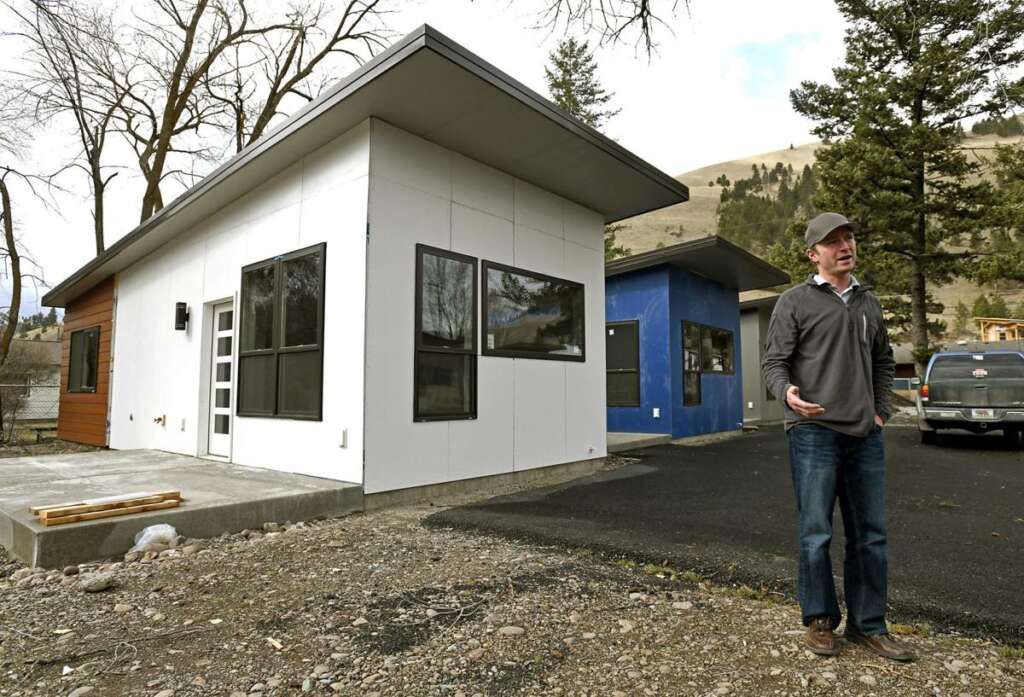
Case Studies of Tiny Home Living in Montana
Successful Tiny Home Communities in Montana
Several successful tiny home communities have been established in Montana, demonstrating the viability and demand for this housing option. These communities, such as Durango Estates in Missoula and Bitterroot Valley Village in Hamilton, provide residents with a sense of belonging and access to shared resources and amenities. By highlighting the success stories of these communities, Montana can inspire and encourage the development of more innovative housing solutions.
Challenges Faced by Tiny Home Dwellers in Montana
While the tiny home movement in Montana continues to grow, there are challenges that dwellers must navigate. These challenges include finding suitable land, securing financing and insurance, overcoming zoning and building code restrictions, and dealing with social stigma. By sharing the stories of individuals who have faced and overcome these challenges, Montana can learn from their experiences and work towards creating a more supportive environment for tiny home living.
Lessons Learned and Recommendations
Through the case studies of successful tiny home communities and the challenges faced by dwellers, valuable lessons can be learned. These experiences can inform policymakers and stakeholders on the best practices for regulating and supporting tiny home living in Montana. Recommendations may include streamlining the permitting process, revising zoning and building code regulations, providing financial incentives, and fostering collaboration between government agencies and the tiny home community.
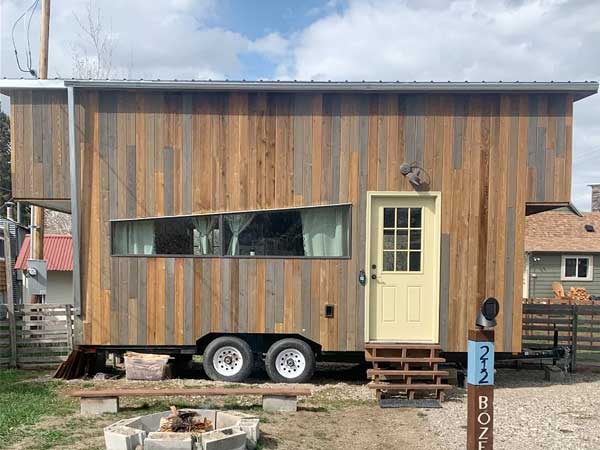
Conclusion
Living in a tiny home in Montana offers a unique blend of advantages and challenges. The affordability, sustainability, mobility, and minimalist lifestyle associated with tiny homes appeal to many individuals seeking an alternative housing option. However, navigating the legal landscape, addressing the limitations of space and privacy, and overcoming social stigma can be daunting.
By understanding the laws and regulations regarding tiny homes, Montana residents can make informed decisions and take the necessary steps to comply with local requirements. The advantages of tiny home living, such as affordability, sustainability, and a strong sense of community, should be balanced against the challenges faced, including limited space, zoning restrictions, and weather conditions.
Exploring alternatives and solutions, such as establishing tiny home communities, collaborating with local authorities, and developing innovative design and construction techniques, can help overcome the challenges faced by tiny home dwellers in Montana. Sharing case studies, lessons learned, and best practices within the tiny home community can be instrumental in shaping future regulations and fostering a more supportive environment for tiny home living.
Through dialogue, education, and collaboration, Montana can continue to embrace the tiny home movement and promote a more sustainable, affordable, and inclusive housing landscape for all residents.

